THE BEST ROAD CYCLING SHOES

Efficient power transfer, comfortable and good-looking. It isn’t a poetic or catchy phrase but it is what you should expect and will find in the best road cycling shoes.
Efficient so that you can transfer the power you bring from your legs to your pedals with minimal loss. Comfortable so that you can deliver that power hour after hour without your feet ever complaining. And good-looking to you and perhaps others so that it motivates your performance and enhances your enjoyment on the road.
In this post, I share with you my evaluation of the best performance road cycling shoes for enthusiasts. Whether you race, do club rides or like to challenge yourself on short segments or over long days, these shoes will help you ride your best in supreme comfort and look good doing it.
WHAT YOU NEED TO KNOW
Click on any statement below to go directly to that part of the post
Shoes are critical to your power, speed, comfort, endurance and enjoyment of cycling
The best shoes are really worth the money, and answers to other key questions
Look past the features; fit and a few performance criteria will help you choose
Top models from Specialized, Sidi, Bont, Bontrager and Lake are the best performers
WHY TRUST THIS SITE AND MY RECOMMENDATIONS
In The Know Cycling is for road cycling enthusiasts like you and me who want to know what gear we should get next and where we can get it at the best prices from great stores. I and my fellow In The Know Cycling testers do hours of analysis on an entire category of cycling gear and incorporate insights from other independent reviewers and riders I trust for each review.
To eliminate potential conflicts or perceived bias, I buy or demo and return or donate all the gear we test. I don’t run any ads on the site, don’t go on company-paid product introduction trips, don’t rewrite and post announcements of new gear as “first looks”, and don’t accept articles paid for or submitted by companies, stores, PR firms or guest authors.
My only influence is what I think would be best for you, my fellow roadie. This is my passion, not a business.
You and I together make this site possible using a simple and transparent model. I find and provide you regularly updated links to each piece of gear or kit I’ve reviewed. Those links take you directly to the lowest priced product listings at online stores that have the highest customer satisfaction ratings amongst the 100 or so stores I track. When you click on and buy something at the stores through the red links, they pay the site a small commission that covers the gear, review, and site costs.
If you get value from this site and want me to keep cranking out reviews, click on the links and buy at the stores they take you to. You will save money and time while supporting the creation of independent and in-depth gear reviews at the same time. If you prefer to buy at other stores, you can still support the site and new posts by taking a pull here. Thank you.
THE ROLE OF SHOES IN ROAD CYCLING
Let me tell you this right up front. I don’t know or care much about cycling fashion. Standard black and red bikes, black shoes and shorts, and jerseys from whatever events I’ve done was my starting point for most of my cycling life. The road cycling shoes I picked always fit me fine and once that was out of the way, it looked to me like the major difference between what I and other riders wore was just style and color and various do-dads that I really didn’t need. I focused on ridin’ rather than stylin’.
I couldn’t have been more wrong. Fit doesn’t always provide the best transfer of power or comfort on a long ride. Fit like a glove or fit like a pair of slippers or even fit in the store doesn’t always or even usually mean it’s the right fit or a comfortable fit for someone pedaling tempo to threshold zone power out on the road.
As to fashion, it’s about the last thing that should matter when it comes to picking a great pair of road cycling shoes. Power transfer and comfort are what set shoes apart and are key to your ability to improve your performance. Shoes that you like the look of (or don’t mind) is the icing on the cake.
Look good = feel good = ride good is certainly something I agree with. It may also be what some companies market and what draws you in. But looks should be why you buy a pair of cycling shoes only after you’ve chosen ones with the right fit, power transfer and comfort for you. At least if you are a serious roadie.
Have you ever thought about getting another pair of shoes other than when your feet start to hurt or your shoes get stretched out or the uppers start looking a little shabby or something new catches your eye? Have you ever really looked into how your choice of road cycling shoes affects your ability to ride faster or longer? Before I started the research for this review, I must admit that as a fellow road cycling enthusiast I would have answered no to both questions.
Some of us (yes, including me) look at every opportunity to find a few extra watts or clicks of speed by picking the right wheels, tires, or helmets and by spending more time in the right aero position, shaving our legs, shedding our gloves, etc. I’ve written posts about all those things. But, the right shoes can also help you increase the power you deliver to your pedals and the speed that shows up on your bike computer.
Some of us focus equally or more on endurance than we do on speed and want to ride more miles or kilometers, do more centuries, sportives, fondos, etc. to get or stay healthy. Better shoes can help you do that too.
Frankly, I should have known better than to overlook the performance benefits road cycling shoes can bring and relegate the decision-making merely to basic fit and fashion. I grew up skiing down mountains, raced through college and still coach. While the skis and speed suits get all the attention, the most important piece of gear is the boots.
If you aren’t wearing a pair of ski boots that fit you snugger than anything else you’ve ever worn on your feet, hold your heels down firmly, provide the room to wiggle your toes and allow you to fine tune the fit at the top of a run, it doesn’t much matter how right you got the wax on the bottom of your skis, how well you sharpened your edges, how tight your ski suit fits or how cool all your gear looks. If you’ve got boots that are the wrong size, fit and flex, you aren’t going to get the most out of all the technique you’ve developed or tactics you’ve planned or training you’ve done. The same goes whether you are racing or skiing moguls or taking a non-stop 15 minute top to bottom run or skiing the deep pow.
Having the right gear on your feet is also critical in football (aka soccer) or basketball or track or ice skating or volleyball or most any sport where your legs power your performance. Fashion may get the attention and sell the footwear to those who don’t know better, but the performance your shoes enable or limit will make a big difference in your success and enjoyment.
In a lot of sports including many I just listed, shoes are your biggest expense. In cycling, however, your footwear is one of the things you spend the least on. Bikes, groupsets, and wheelsets all cost more for a similar level of performance than bike shoes.
Yet I and many of my fellow road cycling enthusiasts seem to be a lot more sensitive spending 100 to 200 more dollars, pounds or euros for a pair of shoes than we would be spending 200 to 600 more than that for a bike or groupset or wheelset. We shouldn’t be. Shoes are just as critical to your performance – your speed, power, comfort, endurance – as many pieces of gear or kit you might ride that cost much more.
THE BASIC Q&A ABOUT ROAD CYCLING SHOES
When I began the research for this post, several questions came up that had to be answered before I could move forward. Since they apply across the whole category of cycling shoes for roadies, I’ll cover them here before sharing with you what I found out about any of the specific pairs of shoes.
Function or fashion?
The good news is that you can get both in some of the best shoes. You can also get those same shoes in rather basic black and other top performance shoes that don’t look like they are trying to make a fashion statement. But, you can also get some shoes that look great but don’t perform very well.
Competition or comfort?
Here again, you can get both – shoes that have very stiff and light bottom soles (known as “outsoles” in footwear lingo) and a very precise and comfortable fit. Those that do both tend to be the higher priced shoes for the more competitive enthusiast, whether it be those looking to go faster or last longer out on the road.
You can also get shoes that are high on comfort and fit well enough but not so precisely or made with materials to get you every last watt of power transfer. These tend to be those shoes that are 100 to 200 dollars, pounds or euros less expensive and are often favored by the endurance enthusiasts who are in it for the pure pleasure of riding and is a bit more focused on their wallet than their speed.
Readers of this blog site run the gamut from competitive enthusiasts that are willing to pay more for performance to those that are more value conscious yet enjoy their riding as much as the next cyclist, if not always at the same pace. In this review, I’ve focused on performance shoes that provide both the most efficient power transfer and comfortable fit.
Are top-end road cycling shoes really worth the extra money?
I think I’ve covered this in the section above but allow me to repeat myself in this Q&A section of the post. In most cases spending more for performance shoes than value ones will indeed give you better performance. The shoes I’ve chosen for this review do with the exception of a couple lower rated ones.
Like anything else, you can take it too far. If you don’t want to, you really don’t need to pay extra for a unique style (e.g. retro lace shoes) or a certain brand name or a top of the line model that has just about every extra you can imagine (e.g. cobranded Lake-Assos, Sidi Shot) but don’t need to get top of the line performance.
At market prices (rather than full retail), you can get a great pair of performance shoes in the $250 to $400 price range and a comfortable value shoe with far less efficient power transfer in the $150 to $200 range. As the saying goes, you get what you pay for. I personally think spending 100 to 200 more is a deal for the improved cycling performance and pleasure you get from your shoes, especially compared to other places you can spend that amount of money only to see little to no real benefit.
What’s all the fuss about Boa?
Boa is a proprietary combination of wires, guides, and dials that together tighten, loosen or open your shoes. They are made by a company called Boa Technology and are used in place of laces, Velcro straps, buckles or ratchets or sometimes in combination with straps on cycling shoes and other sports and non-sports gear. They have become the standard on performance cycling shoes and are starting to be seen on value shoes as well.
Why? Quite simply, they can give you a better and more comfortable fit and are easier to adjust while underway than the straps, buckles etc. they have replaced. The tension is spread more evenly across various parts of your foot as you close the shoe for a secure fit. If they are used in combination with a high quality upper with minimal seams and a good heel cup, insole (aka footbed), and outsole in a shoe size, width and last that fits your foot, they can give you that glove-like feel with efficient power transfer that I’ve never been able to get with Velcro straps and buckles.
Are mens and womens shoes different?
Most companies do sell gender specific shoes. That said, it’s hard to tell whether some of the women’s cycling shoes are really designed for womens feet – stereotypically narrower and smaller and of different shapes and biomechanics then mens – or are of the same design as the mens shoes but available in smaller sizes and in colors shoe makers think will appeal to women.
The good news is that there are plenty of mens shoes (or probably shoes originally made for male riders that also fit women) available in basic black, white, and other gender-neutral colors that are made in half sizes, narrow and standard widths and from different lasts (or molds based on heel width, instep height, forefoot width, and toe box depth) to serve a good range of rider needs, both men and women.
If you wear sports shoes (what we used to call sneakers) or football (aka soccer) cleats or any other sports footwear, boots or well-fitting shoes, you probably have a good idea if your feet are narrow or wide, have high arches, are sensitive to hot spots, etc. This will help you figure out what shoes to try or what special requirements you might need to get the right fit.
How different are the sizes between brands?
There are indeed differences in how companies size their shoes. In the individual shoe reviews below, I point out which ones run small or large and chart which run narrow, wide or standard width.
While most shoes use European sizes, there are also some great charts that convert US shoe sizes to European ones across many brands. You can link to the most complete ones I’ve seen by clicking on Competitive Cyclist for US shoe sizes. They are also shown below. To convert from the UK to EU size, use the US size one full size larger than your UK size. For example, if you are a UK size 9, use the US size 10 column to convert to the European size.

Source: Competitive Cyclist
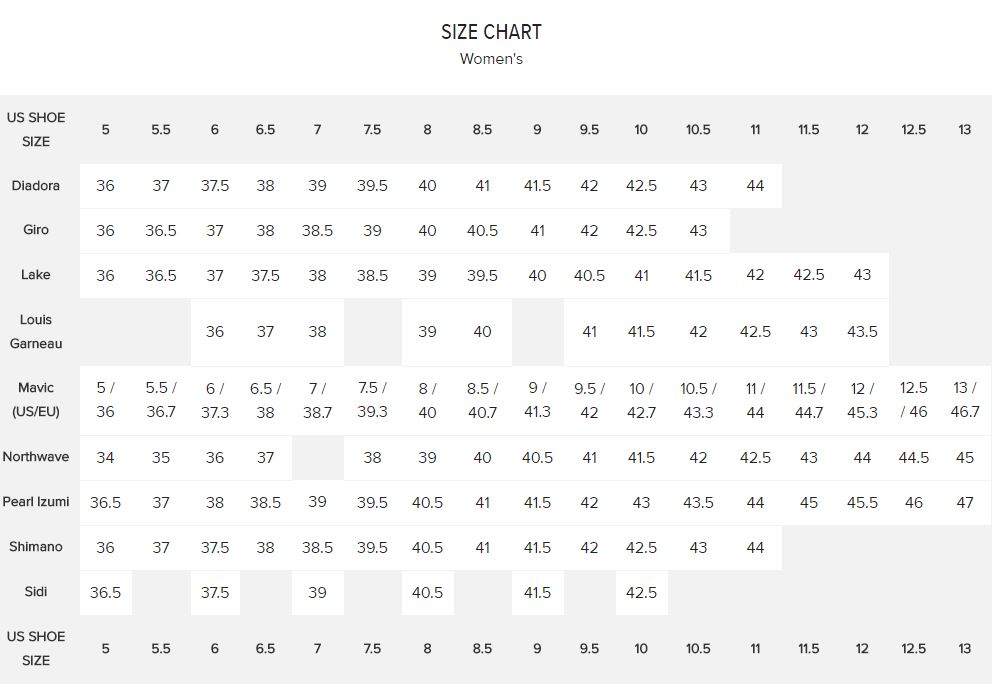
Source: Competitive Cyclist
For those shoes I’ve evaluated that aren’t on these conversion charts, use the brand specific size chart at the links I’ve provided to great stores who carry the shoes at the best prices at the end of each review.
What are the pros and cons of buying shoes online vs. at a local bike shop?
As I learned when reviewing aero helmets (here), buying online is a more efficient way and likely to end up with you getting a better cycling shoe choice and price.
If you’ve been in a bike shop lately, you know that most carry fewer brands and less inventory of models, sizes, and colors than online stores. So to go the bike shop route, you need to be willing to spend the time traveling around to various shops that have the models and sizes you are interested in during the hours when you should be working or could be riding or relaxing at home. If you buy at an online store, you merely order the ones you are interested in with a few clicks whenever you want to. That’s an easy choice for me.
Buying online, you get to wear the different shoes you are interested in hours at a time in the comfort of your own home the way you couldn’t or wouldn’t do in a bike shop. You also don’t have a salesman in the middle of the process who might be urging you to buy something they sell but that might not be right. But, if you aren’t sure what you need or what constitutes a good fit and you have a knowledgeable cycling shoe fitter at your store, you may benefit from buying there.
The harder choice is figuring out whether you are willing to add to your credit card balance by ordering extra models or sizes from an online store until you return the ones you don’t want versus just buying one pair after spending the time going to a lot of bike shops and trying on the shoes they have in stock at each.
You can also apply both approaches. In my case, for example, there was one very high-end shop not too far from me that had a good selection of three of the top brands (Lake, Bont, Sidi) and a chain that sold a couple models made by the larger cycling companies (Specialized and Shimano). Unfortunately, the shoe fitter in the high-end shop was clearly pushing shoes I didn’t need and was selling them at full price while the chain store had a model I liked in a color I didn’t nor the size that I thought would fit best and needed to special order it and wanted me to make a deposit before he would.
Competitive Cyclist in the US, one of the online stores I’ve bought a lot of gear from over the years and has a top 5 rating from the nearly 100 I track (see here), had most of the shoes and sizes and color combos in stock I was interested in and quickly processed the returns of shoes that didn’t fit before the credit card billing period ended. (Timing is everything!)
If you are reading this, I trust you are experienced online shoppers and cycling gear buyers and know what works best for you.
If you want to know how to replicate the cleat position of your old shoes to your new ones or position them without a reference point, here’s a good video from Art’s and another from GCN that tell you how. It’s pretty straightforward.
And if you do plan to get a pair of shoes that can be heat molded for a customized fit, know that the process to do that is designed for you to do in your home oven. It takes a few rounds of 10-20 minutes of heating, cooling, and forming to get it right. Few shops are set up or are going to be able to spend the time to do that with you.
SELECTION CRITERIA FOR ROAD CYCLING SHOES
My discipline for each In The Know Cycling review is to evaluate gear-specific criteria that fit into four groups – Performance, Design, Quality, and Cost. I put an emphasis on Performance and Cost criteria in making my recommendations. Design should mostly be focused on delivering performance rather than to merely say you’ve got some innovation or a spec that no one else does.
Normally, if it doesn’t make the gear perform better or reduce cost, a novel or unique design is wasted effort. With the look of shoes being important to some, some design approaches can provide a distinctive or gotta-have look in the designer’s or buyer’s eyes. I can only point out but can’t judge a distinctive look with my admittedly blind-to-fashion sensitivities. You are the best judge of what design looks best to you.
I describe the criteria within in each of the four groups here.
PERFORMANCE
As I stated at the top of this post, efficient, comfortably fitting, good-looking power transfer is what makes a good cycling shoe and how you should choose them. Two-thirds of that formula – efficient and comfortably fitting power transfer – are clearly performance criteria.
Efficient power transfer is dependent on two things: 1) how stiff the outsole is and 2) how closely your foot moves with your shoe. With a stiff sole and a fit that holds your foot firmly to that shoe so that it moves with no wasted effort, you’ll transfer your power efficiently. Without a good fit or one that doesn’t hold everything but your toes in place, power will be lost somewhere between your foot and the pedal.
A good fitting road cycling shoe will keep your heel immovable, toes free, and midfoot snug. This comes in part from picking one with the right size or, more specifically, the right “last” (heel width, instep height, forefoot width, and toe box depth). Fit also comes from how well the upper and closure system work to wrap you at all points across the top of your midfoot (or “metatarsal” bones), how well your arch is supported by the insole (aka footbed), and how well your heel is held in place.
Comfortably fitting power transfer really speaks to your ability to stay comfortable with that right fit over time. Obviously, if the fit is great but your foot starts to sweat or develop pressure points after you ride for a while, you’ll be less likely to transfer your power as well as you did when you first started riding.
To keep the fit comfortable over a ride of any distance, a good shoe will 1) be breathable enough to allow your feet to cool (keeping them warm is usually done through socks or overshoes, 2) not produce any hot spots or pressure points across the top of your midfoot or along the bottom touch points between the bottom of your foot and insole and 3) allow you to adjust the fit for different situations like changing temperature, swelling feet, hill climbing or sprinting.
It’s important to remember then that a good fit doesn’t guarantee comfort and you can be comfortable in shoes that don’t fit you very well. You need both fit and comfort well secured to a stiff outsole to get good power transfer over miles and miles of riding.
Since everyone’s feet are a little different, I can only describe the cut or “last” characteristics of cycling shoes (for example: runs narrow, wide toe box, high arch) to help steer you to those that might best fit what you know to be the characteristics of your own feet. And to be able to rate shoes on fit, efficiency and comfort for a range of readers, I’ve used input from a cross-section of reviewers I trust who have feet of different sizes and shapes (though sadly most are men’s feet) rather than just offer you the response to these shoes of my own sorry feet.
Once you get the right fit, the shoe’s efficiency and comfort performance are more easily discernible.
Too many companies market their shoes’ power transfer based on the stiffness of the outsole. The outsole might be super rigid but if your foot moves around on top of that outsole, you aren’t going to get an efficient transfer of power. To compare power transfer efficiency across shoes from different brands for this review, rather than just evaluating the sole’s flex or regurgitating the company flex number they come up with comparing shoes in their own line, I’ve used input from independent tester Tour magazine which did relative ratings of each shoe’s flex using an artificial foot fit and secured inside each shoe.
DESIGN
The design of a road cycling enthusiast’s shoe, as with any piece of cycling gear, is mostly focused on delivering the desired performance level for a targeted cost and partly focused on delivering a certain look. Some designs work well in achieving the performance goals while others fall short. Some design attributes like sole composition can be objectively measured against a performance goal while others, like a shoe’s attractiveness to a segment of customers, can only be judged in the eyes of potential buyers.
Just because a shoe has a specific technology or design feature doesn’t mean it’s going to perform better than those that don’t have them. Design is a means to performance, cost, and aesthetic ends. Sometimes a technology or feature helps get you there, sometimes it makes no difference or actually detracts from performance and cost goals.
Unfortunately, since performance is hard to quantify and describe, companies market the crap out of technology and features. You see a lot of that from those selling cycling shoes similar to the way you do from those selling wheelsets or bike frames or cycling clothing. So while I will lay out the major design criteria here, you should only be aware of them and make your choice on how well they deliver the performance, cost and look you want from your shoes, rather than whether your shoes have one design feature or another.
Outsole – Performance level shoes are almost always made from very stiff carbon fiber impregnated resins. Value shoes use less stiff carbon fibers and often nylon fibers in their soles. Outsoles may also be designed with ribs or other structural features to improve their stiffness or provide desired arch support levels or toward other performance objectives. The bumpers on the front and back of the shoes, almost always replaceable are designed to protect the soles from damage or scuffing and, to a lesser degree, to make it easier to avoid falling on your face when you walk around off the bike or through a coffee shop.
Last – The dimensions of heel width, instep height, forefoot width, and toe box depth give a shoe its unique fit characteristics. The proportions of these dimensions will typically remain consistent regardless of the length or size except when there are separate men’s and women’s shoes that are made with different lasts.
Insole (or Footbed) – Many shoes regardless of price come with very basic, wafer-thin insoles that most people will replace with those that can be best fit to the rider’s specific arch and forefoot needs. These insoles are made by specialist companies and represent an upsell for the shop. So you have to figure that into the shoe cost. Some shoes do come with more substantial insoles that work as is or can be customized with included wedges that you insert or velcro to the footbed.
Closures – As mentioned in the Q&A section above, Boa closures and similar dial and wire closure systems that Sidi and Mavic have developed for their own shoes have pretty much taken over the performance market. There are three models of Boa closures used on cycling shoes which provide you more or less functionality, mostly in loosening the shoes but they all tighten more or less the same way.
Most shoes that have Boa closures now use two dials and wires, one at the top of the shoe that close is just below your ankle and a second-placed about halfway down your shoe to close it across you midfoot or from the top to bottom of your metatarsal bones. A few shoes will also use a small Velcro strap below the middle Boa to tighten the shoe in the area just above the toes.
With the latest generation of Boa closures called lP1 (small L, capital P, the number 1 – don’t ask me what it means), you can pull up on the dials, totally relieving all the tension in wires for a quick exit from your shoes at the end of a ride or to open them fully to put your foot in when you first put them on. Earlier models still found on some shoes like the Specialized S-Works 6 allow you to turn the dial one way or another to tighten or loosen the wires but don’t have this total release function, something I welcome on form-fitting shoes.
Laces have made a comeback with retro or football styled cycling shoes. You’ll see them both on high performance and value shoes most prominently from Giro. Laces provide almost infinite adjustment to get the fit right when you first put them on but you obviously can’t adjust them while riding unless you stop.
Ratchets, buckles, and Velcro straps are the traditional closure systems used mostly on value shoes these days but you will find straps used in combination with dial and wire closures in some cases as in the example mentioned above.
Upper – Uppers differ based on the type of material being used, how many separate pieces are stitched together, and how flexible, soft and breathable they are. Some shoes use real leather, most use a synthetic leather-like material and others use a synthetic mesh.
One piece uppers eliminate the potential pressure points or “hot spots” across the top of your feet that come with stitching or seams pressing down on them. The more stitching and seams, the more likely you get pressure points and potentially an uneven fit from materials that stretch differently.
Some shoes will use a synthetic leather upper with a more breathable mesh near the toes to provide more ventilation where feet tend to sweat more. Uppers will also be perforated with holes to improve breathability. Softer and more flexible uppers can improve flexibility and improve the shoe’s fit but may also provide more give when you are pedaling and lead to less efficient power transfer.
Venting – To keep your feet from overheating, uppers usually have perforations throughout the upper sometimes combined with a mesh area in spots where the feet can get especially overheated. Some shoes are great for the summer while others with less ventilation can be worn three seasons without an overshoe but might be a little warm in the summer. Most good shoes have vents in the outsole for cooling which will be covered over with an overshoe when riding in cooler weather.
Customization – Some of the more expensive shoes have heat moldable insoles, heel cups, and even uppers to customize the fit to your shoes. Moldable insoles make sense if you have feet that pronate unusually. Moldable uppers or integrated upper and outsoles like on Bonts can help improve your fit if you have bunions or you have found over the years that you just have a hard time finding shoes that will fit your feet.
According to the companies that make these heat moldable shoes, most people don’t need or even use the molding. Heat moldable shoes are often more expensive and take several hours of molding and remolding over the first few months of use to get them right. If you feel or are being told you need a moldable shoe, you may want to consider whether you are going with what seems like a cure-all feature that you don’t really need or your shop is trying too hard to sell you a shoe that’s not right for you.
Weight – Cycling shoe weight is another place where we as riders and the industry as marketers put way too much emphasis on something that matters so relatively little. With the exception of a couple of outliers, most of the Performance shoes weigh within 50 grams of each other at around 250 grams per shoe. This is not a criterion most enthusiasts should concern themselves with.
Sizes – You’ll find half sizes available for most shoes in the more common foot size range, women’s sizes or at least smaller shoes of similar lasts from most, and some shoes sold in both normal and wide widths. While most shoes have normal or standard widths that fit the largest number of cyclists, the lasts on some shoes are naturally narrow or wide to start out with. The chart below shows where each shoe falls on the width spectrum including those that sell multiple widths of the same shoe.
Outsole bolt holes – Nearly all road shoes come with 3 bolt holes in the outsole to work with road cleats made by Shimano and Look, the most popular pedal systems. Speedplay, another popular road pedal system, use cleats with 4 holes. While you can find a couple shoes that come with outsoles specifically designed for 4-hole Speedplay cleats, a simple adapter Speedplay makes can convert any 3-hole shoe to work with their pedals. If the shoe you are interested in only has 2 holes, you better be planning to use them with mountain bike cleats as they won’t work with your road bike ones.
Walking – Chris Froome took to running in his cycling shoes on a 2016 Tour de France stage up Mount Ventoux when his bike was run over by a moto and there were no other bikes (or running shoes) immediately available. While none of these shoes are designed for running and few are really great to walk in for long, there are some I’ve noted that may be less desirable than most for a mid-ride trip into the café.
Style – We can all judge this for ourselves. My suggestion is to get a shoe that will provide a comfortable fit first and efficient power transfer if you want a performance level shoe. Once you’ve done that, pick between the shoes whose look or style you are good with. Most come in black and white along with yellow or red with standard lines while there are others that have tried to separate themselves with a unique style or comfort touches including some with a retro lace-up closure system, others with real kangaroo leather, and still others with bright neon green, orange, and blue color choices.
QUALITY
Fortunately, all the shoes I’ve reviewed are made of pretty high quality. The most you should have to do is replace the heel pads on the bottom of the shoes when they wear down to improve your walking rather than your riding. You’ll also want to keep your Boa system clean by using some water on the dials and silicone on the wire guides to avoid things from getting gummed up.
Here’s a brief video from Boa and Specialized which shows how.
Of course, you may treat your shoes in ways that extend or shorten their life. My suggestion is that if you are going to put a few hundies down on a nice pair of shoes, take care of them. I’ve tried to point out where I know of a shoe’s reputation for wearing out in one place or another. Frankly, all you’ll have to do with most of these shoes is replace the heel pad, keep the closure systems and uppers clean and avoid scuffing the soles and they’ll last a long time… or until something new catches your eye.
COST
With shoes, your cost is primarily what you pay for them when you first buy them. Other than heel pads, there are no added or maintenance costs you need to figure in along the way. Depending on the shoes you buy or the needs of your feet, you may need to buy custom insoles when you first get your shoes. A lot of us just transfer the insoles we already had made up from shoe to shoe.
Like much of the cycling gear these days, the price of shoes often depends on whether the company sells them just through local bike shops or also sells them online. Specialized and Bontrager, which make two of the more highly rated shoes only sell them through local bike shops and independent bike dealers and offer little discount off their MSRP or RRP. Some of these shops also sell online but the distribution is frequently limited to sales in-country.
Most of the other shoes reviewed can be bought online, often at a 10-20% discount to the store prices. Those who only sell through a few online stores are typically closer to the 10% discount level.
In The Know Cycling supports you and your fellow enthusiasts by doing hours of independent and comparative analysis to find the best road cycling gear and kit to improve your riding experience.
You support us and save yourself money and time by buying anything at all through the red links to stores we’ve picked for their low prices and high customer satisfaction. These stores pay us a small commission when you buy there after clicking on these links.
RECOMMENDATIONS
With the chart below and the to-the-point comments about each shoe that follows, my attempt is to give you enough about what matters using the selection criteria I just laid out so you can pick a shoe or a couple of shoes you want to try on. While I normally recommend a best performer in each category of gear I review, I can’t do that for shoes for two reasons. First, some great shoes will not fit your feet and second, how a shoe looks will be important in choosing between them for some of you.
What I have done is give you a performance rating for each shoe based on efficiency and comfort, assuming you’ve got the right fit to start with. While most shoes are designed to fit the majority of riders, some shoes run narrow or wide by design or heritage and a few are made in more than one width.
My suggestion is to look for the shoes with the best performance rating in the column of the chart that you think best fits the width of your feet. So, if you normally wear a narrow shoe, look at the shoes in that column of the chart. I’ve rated the shoes that are in the upper right of each column highest on overall performance. That overall performance rating is simply the rating I’ve given for comfort times the efficiency rating. Similar to a golf score or a course time, the lower the number, the better the rating.
Specialized S-Works 7 – With superior efficiency and comfort, there’s few if any better
Performance Rating: 1
Like: Great, molded-like fit and comfort sustained over hours with little micro-adjustment required; as stiff/efficient power transfer as any shoe; great heel hold down; midfoot supported well between form-fitting upper and out/insole supported arch; room for toes to move around; vented toe box; bonded seams with no hot spots; comes in basic black or white but looks can be spiced up with neon yellow or rocket red dipped options
Don’t Like: Hard to get into – would be easier to get into with the newest Boa dials that fully release rather than unwinding the wire; some shoes have had dial/wire issues requiring maintenance or replacement but lifetime guarantee covers costs; some break-in time; won’t fit heavier/winter socks in size that best fits regular socks; one of the most expensive and not discounted
For you if: Regularly sized feet, don’t plan to ride shoes in cold weather
Not for you if: Flat feet, wide ankles, don’t like a close fit, don’t want to spend top dollar
Notable: Two Boa2 closures, stitchless seam upper, one of the lightest (225g)
Pricing: MSRP/RRP USD$400, £280, €370. Available online for UK/EU residents from Tredz 10% off w/code ITKTDZ10,CycleStore. Others can find these shoes in local bike shops
Sidi Wire Carbon – First-rate power transfer and comfort but some drawbacks that show its age
Performance Rating: 1
Like: Supremely stiff, breathable shoes with excellent and highly tunable fit for narrow feet that together provide top-of-the-chart power transfer efficiency and comfort; classic cycling shoe looks; for years, the benchmark for others
Don’t Like: One of the most expensive and heaviest performance shoes; Sidi proprietary dial and reel system not as easy to use for fit tuning underway as Boa; simple insole that comes with shoe needs replacement if you want more support under your forefoot or arch; many “innovations” that are more complex to use than more modern shoes from others
For you if: Narrow feet; compete or want the best performance in a classic shoe where price isn’t important
Not for you if: Want a more modern, simpler, lighter and less expensive shoe
Notable: As many different color combinations as you could imagine suiting your kit
Pricing: MSRP/RRP USD$500, £300, €400, AUD$500. Available from Competitive Cyclist, Amazon, UK/EU Tredz 10% off w/code ITKTDZ10, Chain Reaction, Wiggle, Merlin.
Bont VayporS – Outstanding power transfer for race-focused enthusiasts who want a custom fit
Performance Rating: 2
Like: Ultimate stiffness and power transfer from a one-piece boat-like structure that integrates outsole and supporting parts of the upper; outsole/upper structure can be molded to riders’ unique fit needs
Don’t Like: Walking in shoes will soon scuff and wear outsole; not the most comfortable over longer rides; can get quite warm in hot weather; will likely take multiple moldings to get desired fit; some find the unconventional forefoot shape and boat structure unattractive; insole provided is useless so need to buy better one adding to already high cost
For you if: Race or are competitive enthusiast; have hard to fit feet especially because of unique protrusions from bones or bunions; have the patience or even like to adjust your gear over a period of time to get it just right and superior to others
Not for you if: Looking for a versatile shoe – competition, endurance, able to walk around; have flat fee (arch built into sole)
Notable: Sizes run small but come in normal, wide and narrow fit options; very small distance between bottom of foot and cleat (“stack height”) requires lowering seat post a few mm to maintain bike fit; excellent Boa closures and placement
Pricing: MSRP/RRP USD$440, £270, €360, AUD$480. Available from Wiggle, Tredz 10% discount w/code ITKTDZ10.
Bontrager XXX Road Shoe – Excellent power transfer and average comfort at a top price
Performance Rating: 2
Like: Power transfer in the top tier of performance shoes; good air flow in warm weather
Don’t Like: Thicker upper is stiff and feels tight, less comfortable than the best shoes; takes a few long rides to break-in to average comfort level
For you if: Have wide feet; don’t want to mess with custom molding
Not for you if: Value comfort
Notable: Top of the line Boa lP1 closures for easy exit
Pricing: MSRP/RRP USD$400, £270, €350, $460. Available from Trekbikes.com
Lake CX332 – Customizable and comfortable but more flexible leather upper makes for less efficient power transfer
Performance Rating: 2
Like: Leather upper provides comfortable, real-world feel. Heat moldable heel allows a custom heel fit. Dual Boa dials give more control than prior one Boa model. Stiff bottom sole. Good looking shoes in basic black and white. Come in standard and wide models and 4 drilled hole option for Speedplay pedals.
Don’t Like: Takes a couple dozen rides to break in the uppers. Toe box runs a bit narrow. Flexible leather upper material leads to average power transfer against today’s shoes. Boa L6 dials only turn to tighten; have to lift Boa to take all pressure off and then tighten to the desired level.
For you if: You want the look and comfort of a leather upper and are willing to trade-off a bit of power transfer for it.
Not for you if: You want precision fit, micro-adjusting, maximum power transfer shoes.
Notable: Lake CX 402 model allows for sole as well as heel moldability for even more custom fit at a higher price. Also comes in red.
Pricing: MSRP/RRP USD$430, £326, €365. Available from Competitive Cyclist, Sigma Sport, Mantel UK, Bike24
Giro Empire SLX – Exceptional comfort and unique style at expense of power transfer and adjustability
Performance Rating: 3
Like: Superb fit and slipper-like comfort lasting throughout the ride; lightest performance shoe going though matters more in feel than performance; one of the least expensive performance shoes; some find them very breathable while others find them sweaty
Don’t Like: Below average power transfer despite stiff outsole because of poor arch support and thin, flexible upper; takes a while to lace up just right; have to stop if you like to adjust fit during ride; thin sole can require shorter cleat bolts and lowering seat post
For you if: Prize comfortable fit, weight, and style above all else; have narrow feet
Not for you if: Like to tighten/adjust shoes for in-ride situations; don’t want to mess with laces; have wide feet; are a competitive or racer level enthusiast
Notable: Very low stack height, three different arch height insole options; super light (175g per shoe)
Pricing: MSRP/RRP USD$350, £275, €325, AUD$400. Available from Competitive Cyclist, Tredz 10% off with code ITKTDZ10, Wiggle, Chain Reaction Cycles.
Gaerne Carbon G.Stillo – Brash cycling style and excellent long ride comfort at the expense of efficiency
Performance Rating: 3
Like: Great comfort from flexible and breathable upper and padded tongue; distinctive Italian, football shoe styling
Don’t Like: Emphasis on comfort comes at expense of power transfer; different views on heel retention; front outsole pad is not replaceable; expensive
For you if: Bold colors and brash design trumps all
Not for you if: Looking for traditionally narrow Italian shoe fit – these run at normal widths
Notable: Comes with insole that has limited arch support – will likely want to replace with better one; white shoes come with a 4 hole Speedplay cleat option
Pricing: MSRP/RRP USD$420, £320, €415. Available from Wiggle, Chain Reaction Cycles
Fi’zi:k R1B – High on comfort but mushy fit and power transfer
Performance Rating: 4
Like: Supremely comfortable feel with cushioning for ankle and heel and use of soft upper synthetic; among the easiest to get on and off; very sleek look
Don’t Like: Heel hold average; narrow toe box; precarious walking on smooth surfaces; cleat mounting holes may not slide back enough; run a bit large
For you if: Comfort and style matters more than fit and performance
Not for you if: Wide feet; competitive enthusiast rider; walk through coffee shops often
Notable: Pullover flap makes tongue irrelevant
Pricing: MSRP/RRP USD$400, £280, €350. Available from Competitive Cyclist, Tredz 10% off with code ITKTDZ10, Chain Reaction Cycles
Louis Garneau Course Airlite – Moderately stiff and comfortable shoes available in striking colors
Performance Rating: 4
Like: Combination of good, if not the best power transfer and comfort; red and neon provide striking color options along with standard white; well supporting and comfortable insoles for arch and forefoot; closure system that allows easy exit when you need it
Don’t Like: Heel hold down depends on friction pads more so than heel cup shape; good not great shoe
For you if: Aren’t willing/able to spend top dollar for bold looking performance shoes
Not for you if: Wide feet; don’t like loud shoes; want the best level of power transfer for racing
Notable: Two sets of insoles provided – one with perforations for hot weather and a second with insulation for colder temps; top of the line Boa lP1 closures that fully release tension enabling you to quickly remove shoes
Pricing: MSRP/RRP USD$360, £225, €245, AUD$450. Available from Competitive Cyclist
Scott Road RC – Good but not top-ranked power transfer efficiency and comfort
Performance Rating: 4
Like: Good overall comfort; stiff yet breathable upper and very good heel hold provides good efficiency
Don’t Like: All “good” and a lot of “innovations” but nothing that really distinguishes the performance or attracts me to this shoe over others: white Boa dials hard to keep clean
For you if: Narrow feet
Not for you if: Want black shoes or distinctive styling
Notable: Run small; insoles come with wedges to add height under toes and arch; stiff outsole from front through arch but more flexible under heel, theoretically for injury prevention; latest Boa dials
Pricing: MSRP/RRP USD$350, £250, €300. Available from Competitive Cyclist
Pearl Izumi PRO Leader III – Poor heel hold and breathability detract from efficiency and comfort
Performance Rating: 6
Like: Comfortable over long rides in moderate weather; forefoot angle and arch height easily adjusted with inserts;
Don’t Like: Not as efficient as shoes with the best power transfer; wide heel cup and loose heel hold; not as breathable as best shoes; lined grid styling and dial placement isn’t appealing for my tastes
For you if: Comfort and distinctive style are priorities
Not for you if: Have high metatarsal bones across top of foot; ride in hot weather
Notable: Boa lP1 closure system; dials placed on heavily padded tongue
Pricing: MSRP/RRP USD$320, £250, €350, AUD$440. Available from Competitive Cyclist, Cyclestore, Tredz 10% discount with code ITKTDZ10
* * * * * * *
Thank you for reading. Please let me know what you think of anything I’ve written or ask any questions you might have in the comment section below.
If you’ve gotten some value by reading this post or any of the reviews or comments on the site and want to keep new content like this coming, click on the links and buy at the stores they take you to. You will save money and time while supporting the creation of independent and in-depth gear reviews at the same time. If you prefer to buy at other stores, you can still support the site and new posts by taking a pull here. Thank you.
And please, let’s stay connected! Using the widgets in the right-hand column, you can sign up to get an email when new posts come out, follow on Twitter and Facebook, and get posts sent to your RSS reader.
Thanks and enjoy your riding safely!
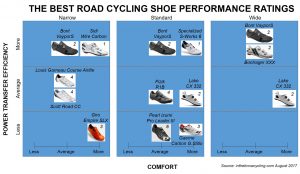

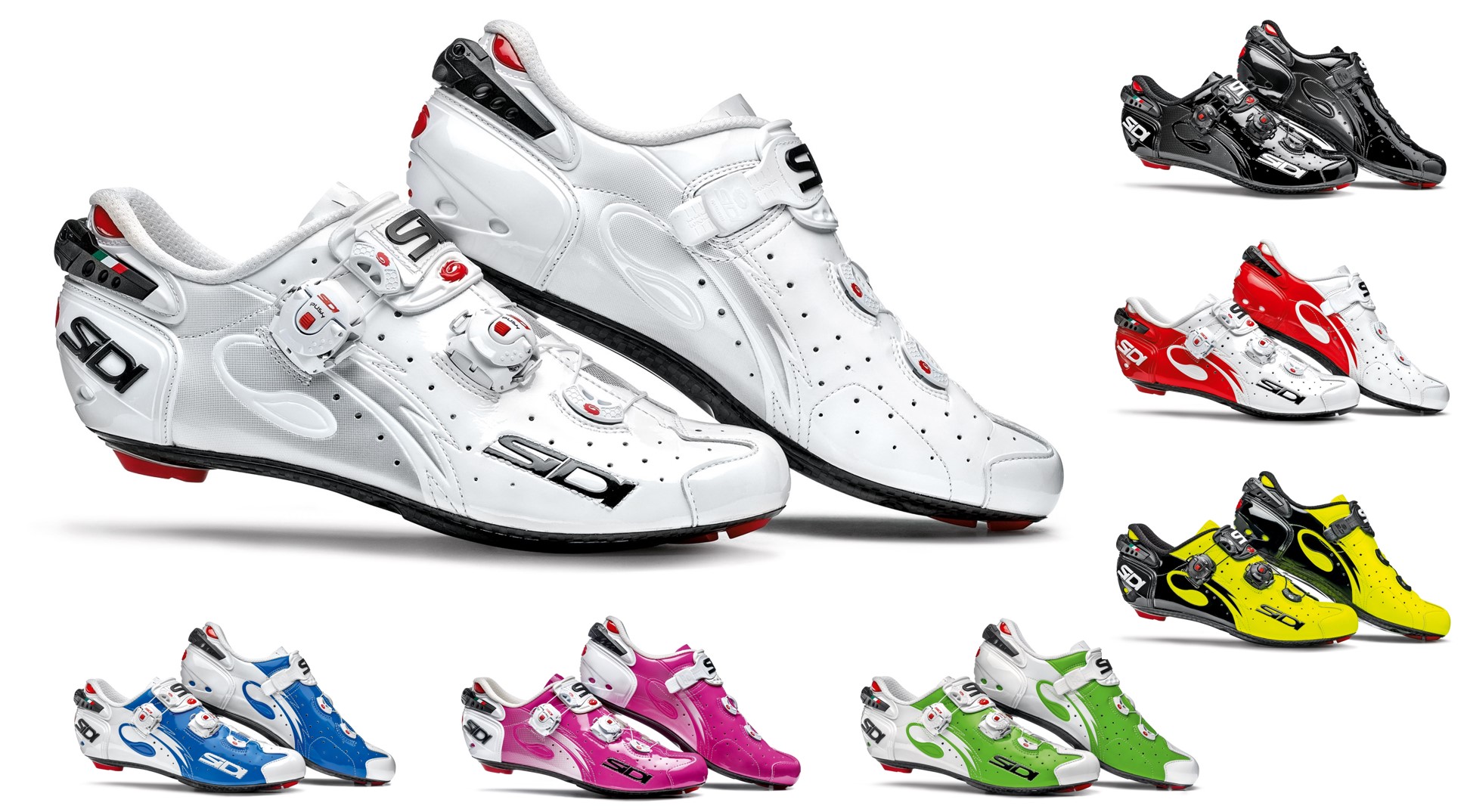
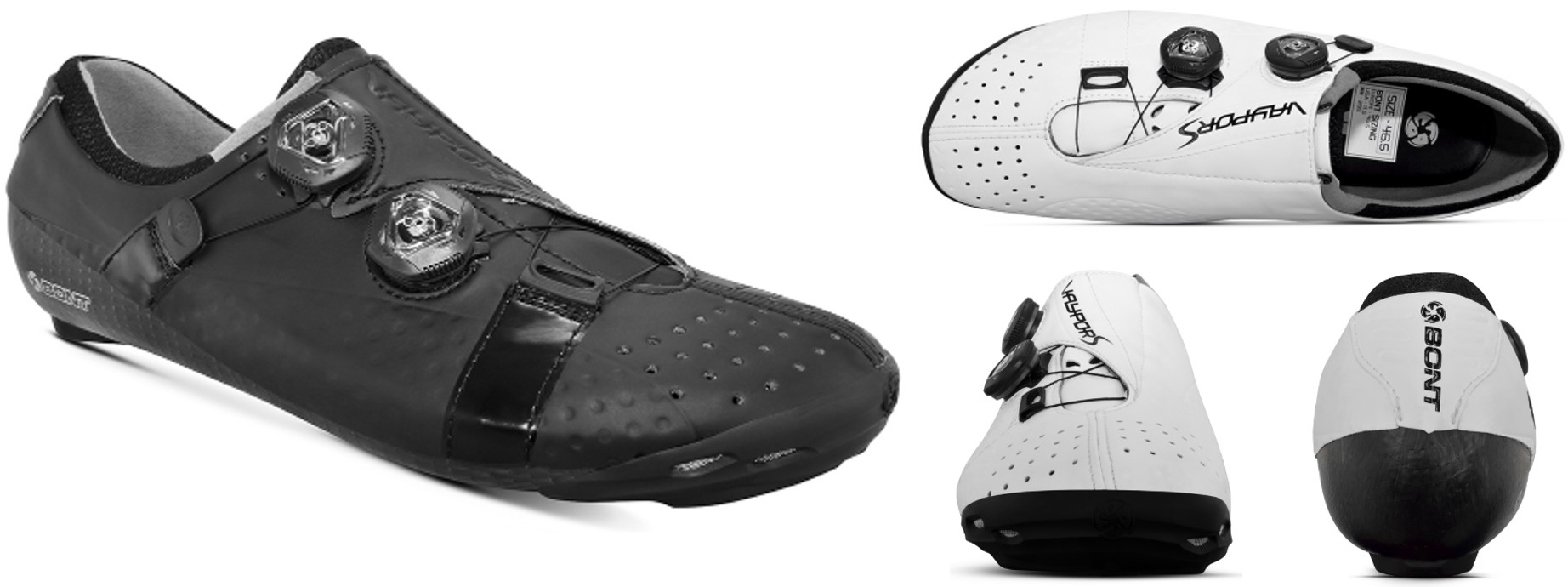
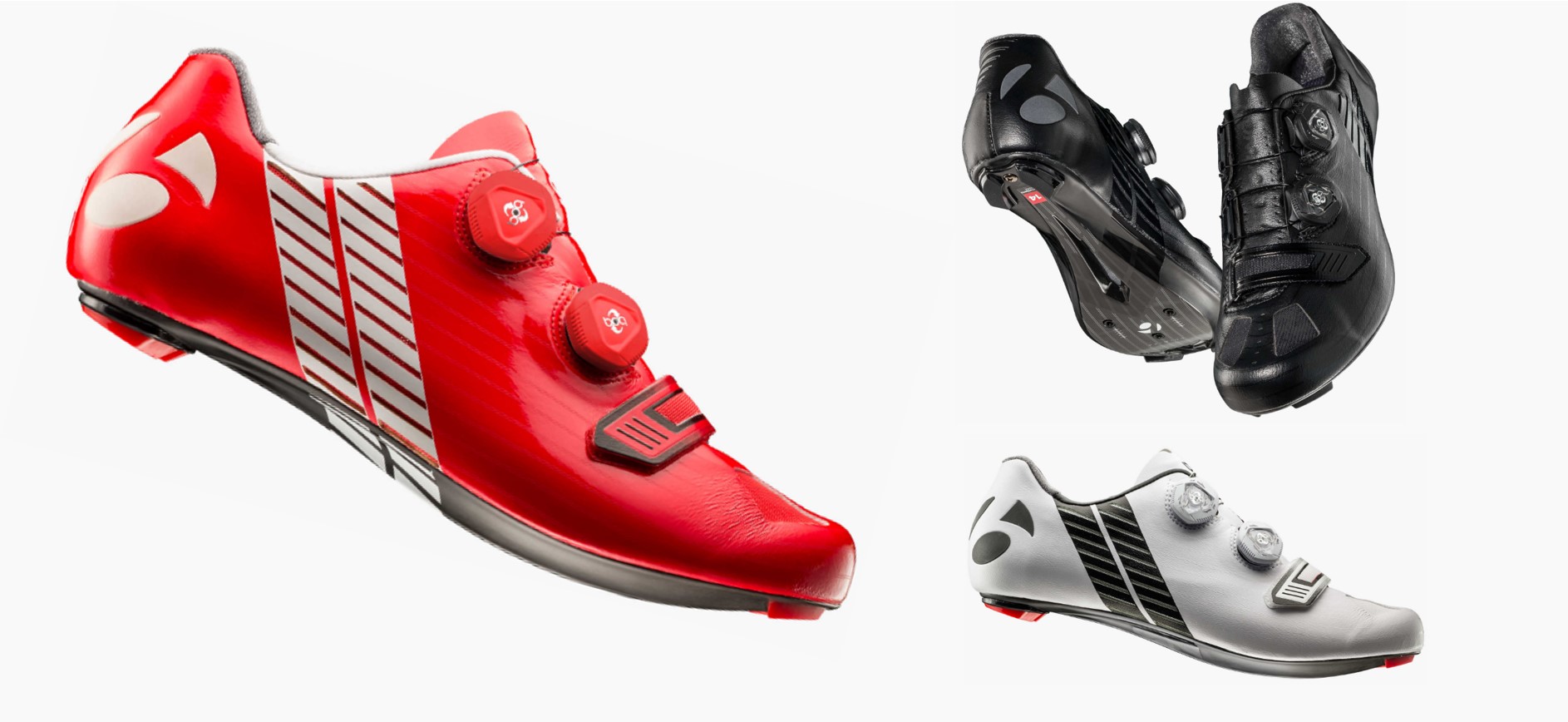
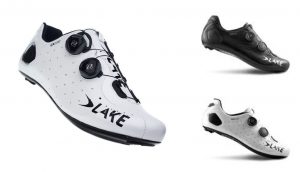
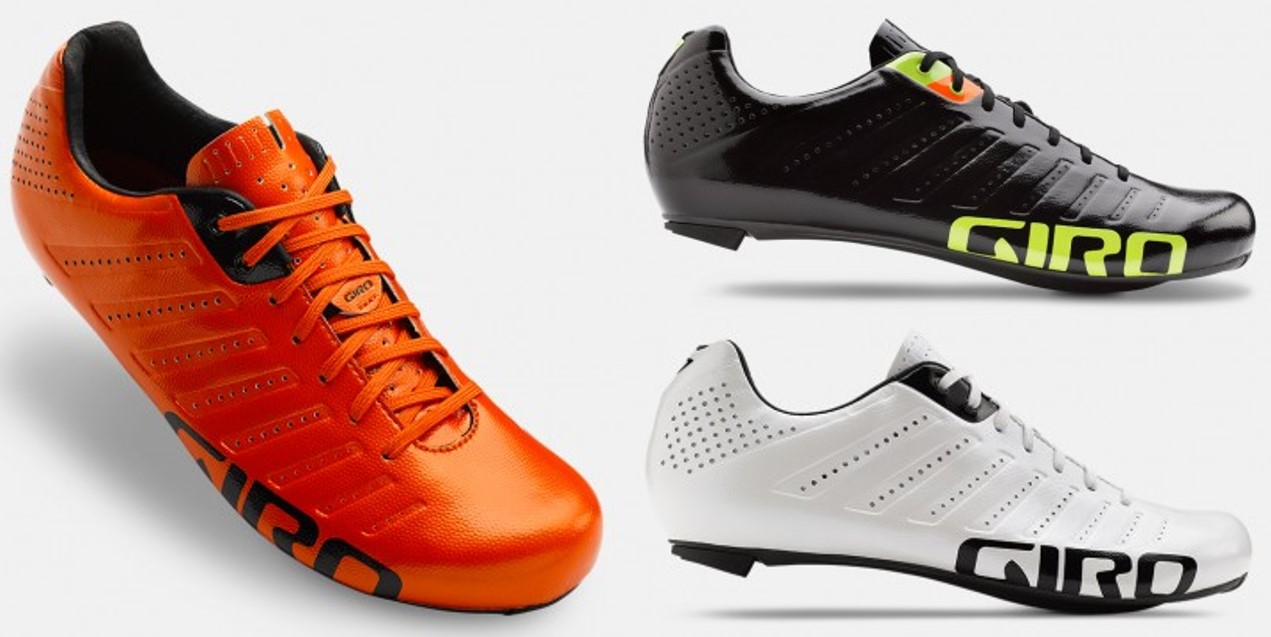
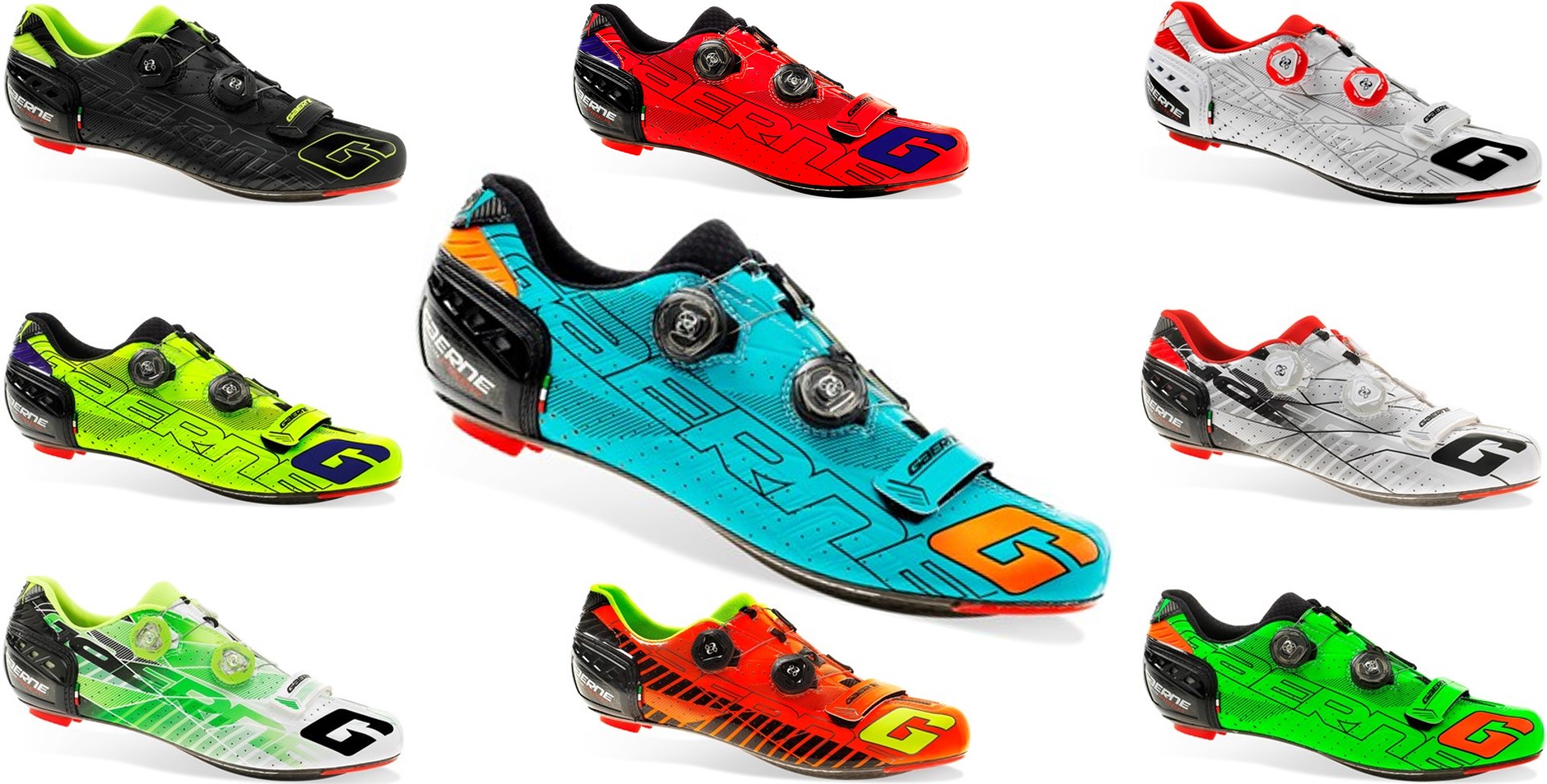
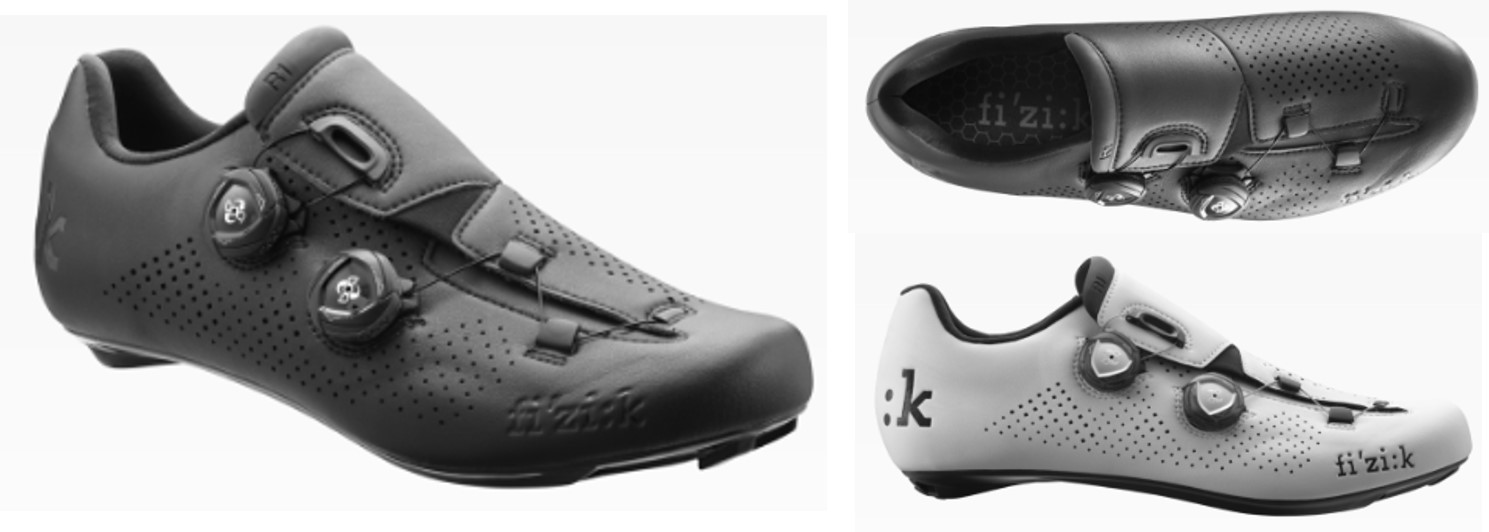
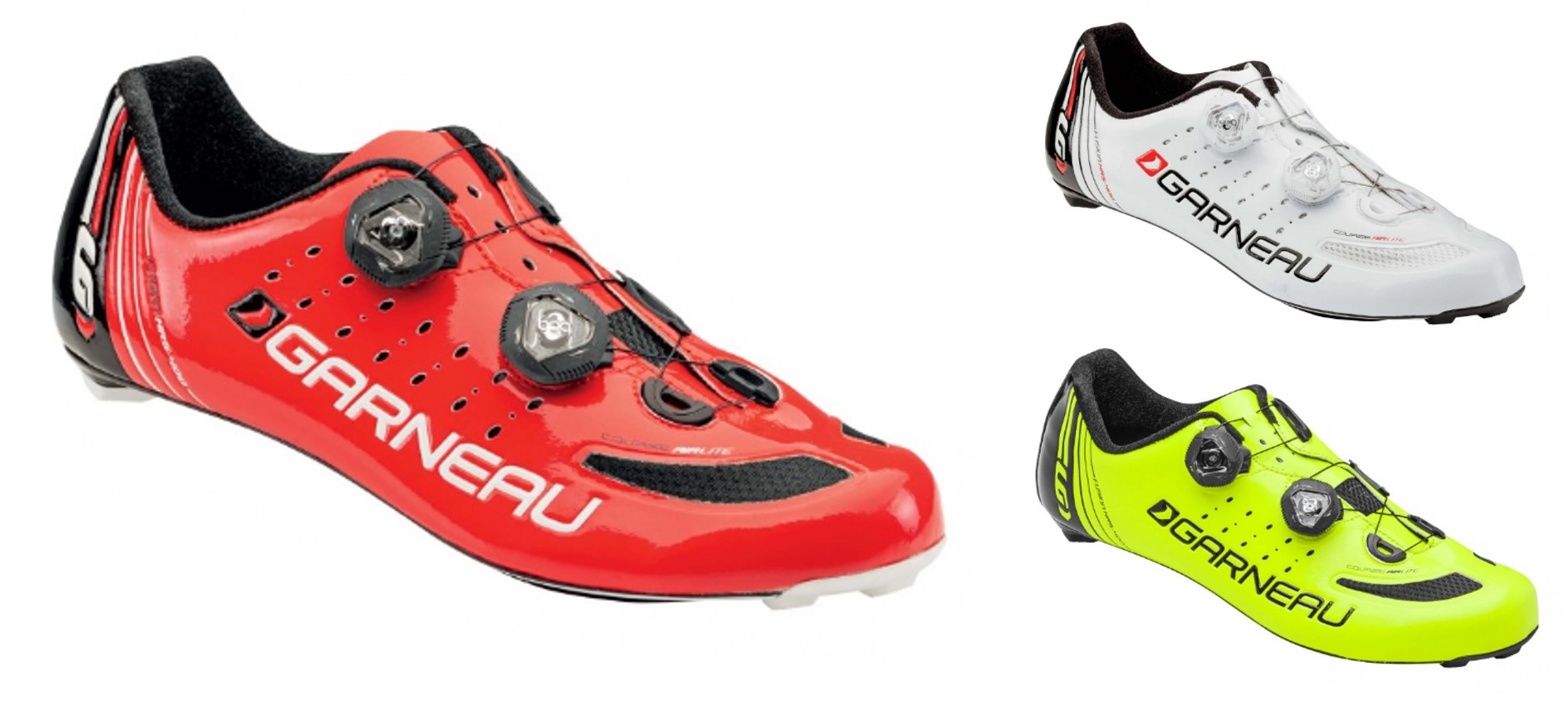
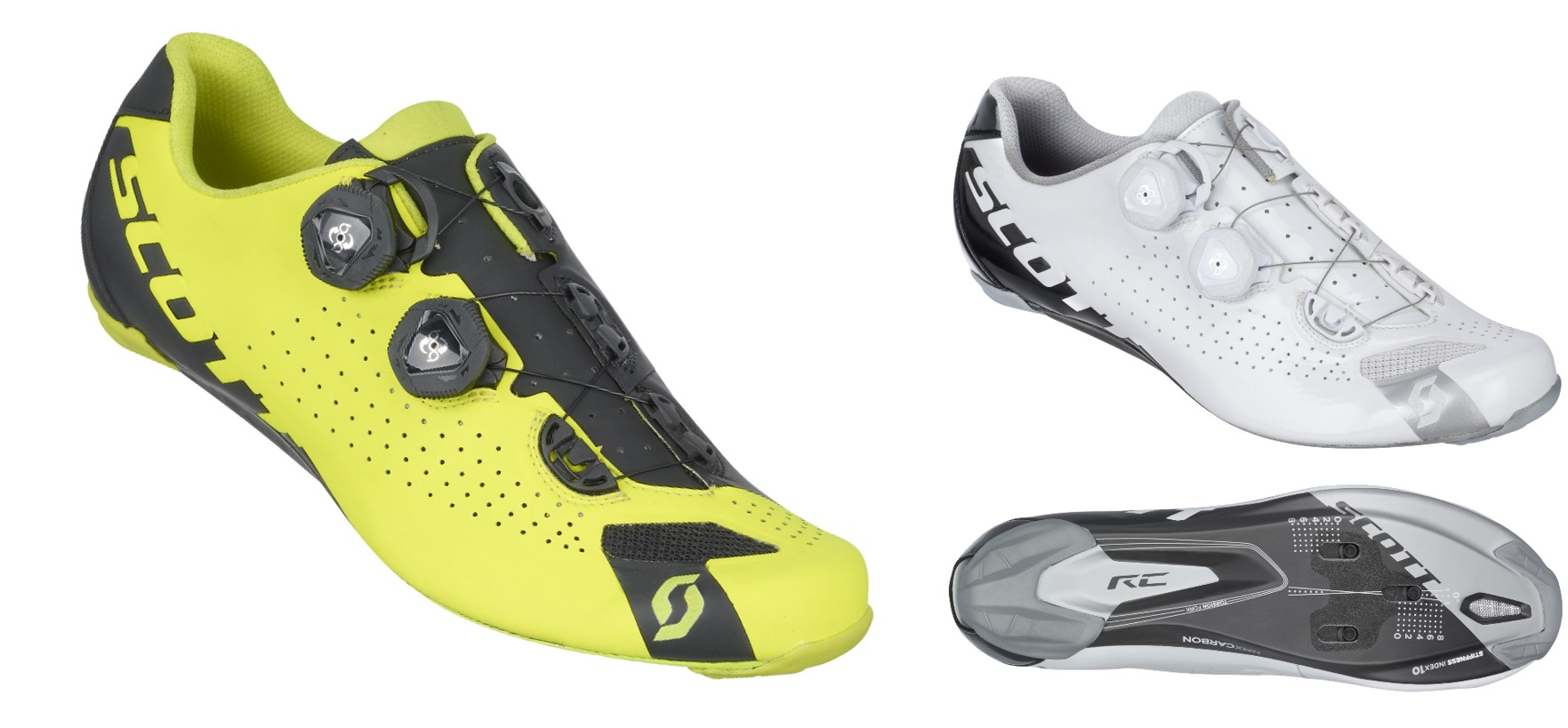
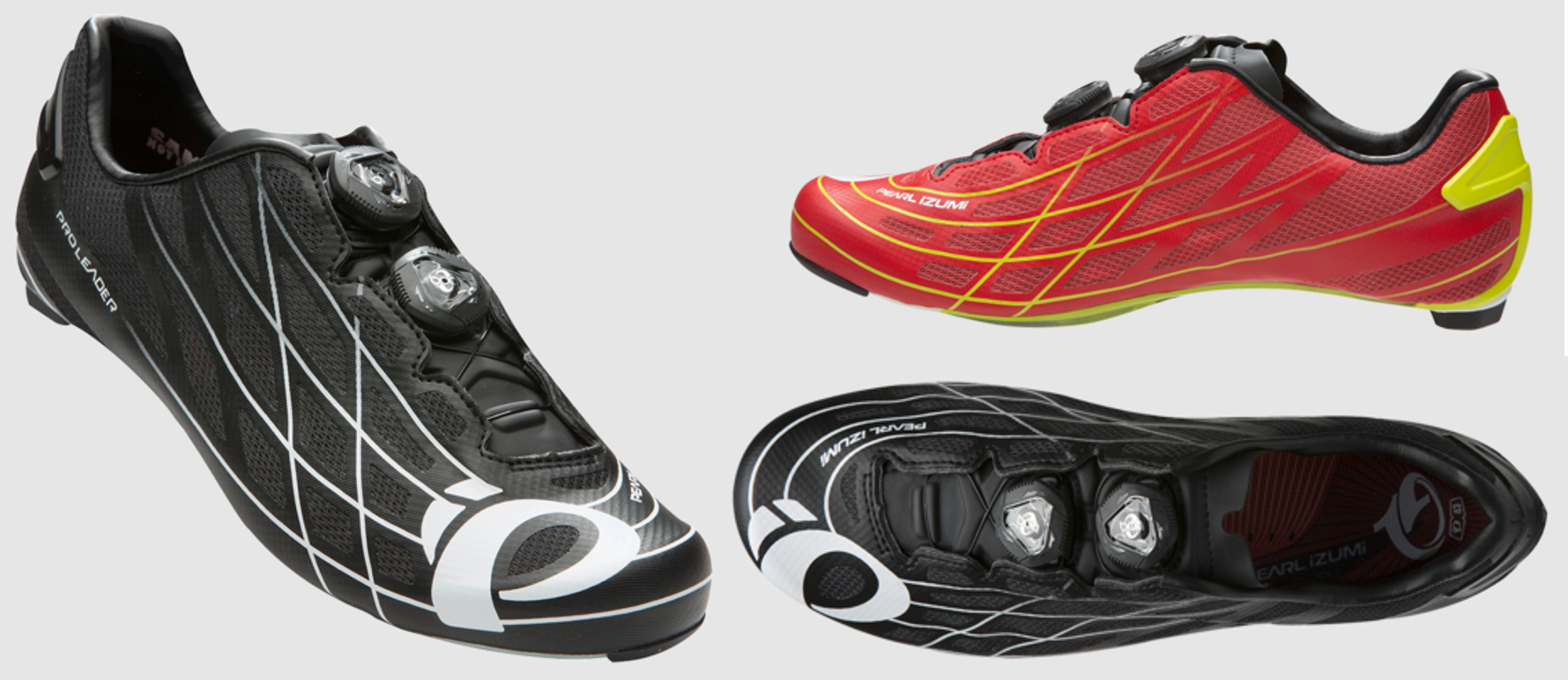
Steve: Very timely post…Thanks so much
Curt
Thanks for further validating the $$$$ I dropped on the S-Works shoes last fall. I love them! So much better power transfer compared to my original shoes that I had to learn to shift my weight back a bit on the bike to avoid the rear wheel skipping off the pavement during a sprint or uphill attack.
Steve,
After suffering on longer rides in my old shoes I bought the Bont Vapour S about six months ago and they are brilliant. I’ve used them on longer rides (100+ miles & 460 miles in 7 days) and in hot & cold weather and on big climbs and fast club rides. Compared to my previous shoes they are excellent.
The left shoe fitted well out the box and the right shoe needed a bit of molding. I went back to the shop (Sigma Sport) and they did that FOC – they were selling the shoes at a big discount. I have wide feet and got the wide fitting.
I really love these shoes.
Nick
Steve – I forgot to mention that I changed the insoles immediately for Specialized foot beds that I’d had in my previous shoes.
Nick
Great article, as always! I am looking forward to the update with Shimano shoes reviewed. I have wide forefoot/narrow heal, flexible flat feet, and it’s always been very difficult for me to find shoes that fit well. Shimano’s have been the best but I still feel like I could get a better fit. Thanks again for all of your hard work!
I just spent two weeks and (too many hours) reading many reviews picking out new shoes. I tried the S Works on for size and they were my first choice but the price is high. I decided to hunt for the ‘best buy’ as opposed to the ‘best at any price’ and ultimately went with the Shimano R171. It’s retail is half that of the S Works, and pretty easily discounted to as low as $120 or so from your preferred vendors. Now have 100+ miles and I’m very, very pleased with the purchase. Other shoes might have a few percentage points ‘better performance’ (however that might be calculated) but at a big multiple of the price. It’s exactly the same as the R321 except not moldable and not quite as stiff although I can’t imagine what greater stiffness would feel like as these shoes really transfer the power. They don’t have Boa but are pretty easy to adjust while riding. Will definitely check out the new models with Boa when they are released. Highly recommend Shimano, this is my third pair.
What is your opinion regarding Mavic Cosmic Ultimate shoes with boa like closures. Thanks.
Larry, I’m not a fan. Sizes small, tight, average comfort, bottom tier power transfer efficiency. They are coming out with a new model so i didn’t review this one but would have probably given it a 6 performance rating. Hoping the new one is better. Steve
Do you have any experience with the Suplest Shoes? They seem to have good reviews and i tried one last year at Eurobike and it was very comfortable. Thanks
Yannick, Never heard of them before your comment. I’ll check into them. Thanks, Steve
One perspective on the Bontrager XXX: I’ve had mine for over a year and love them. At the suggestion of my dealer/fitter, I did swap out the original insoles for something from Body Geometry. The shoes are very comfortable – and I don’t have a particularly wide foot.
Any comments on the Northwave Evolution Plus? I will understand it if they don’t quite make the “performance” cut. Thanks.
Geoff, Correct, their power transfer efficiency isn’t on par with the performance shoes. Steve
Great article!
I have wide feet, and I just got the S Works shoes in the wide width. They are fantastic! If you have wide feet, I would recommend trying them.
Nice review! I tried the Sworks 6 recently at a local shop, and am curious about your “break-in” comment. I found the toe box a bit cramped, but think going up 1/2 size would probably leave the midfoot too wide. I would assume the tox box would not really break in per se, but maybe I’m wrong. Also curious if you have any experience with the Rapha Climbers shoes. Not common, but I tried them on and the fit was nice. Same sole as the Empire SLX I believe so power transfer may not be that great considering the price though.
Hi Adam, Toe box should fit from the start. If not, try a different size or if you foot is wide, you might need them in the wide size (only available in black on these shoes) or a different shoe altogether. Don’t know anything about the Rapha shoes. Steve
Hi Steve, nice review!
Happy giro slx user here. You wrote “Below average power transfer despite stiff outsole because of poor arch support…”
The shoes come with adjustable arch support.
I found this article after I purchased the S-Works 6 shoes. Your article confirms my beliefs – $400 shoes, while crazy expensive, make a difference. The S-Works grip my heel like no other shoe has before and the difference is enormous! I love the intense heel grip on the shoes – my feet are one with the pedal. I can’t believe how much I’ve been missing out before I got these shoes! A tip for getting in/out of these shoes easily – unhook the boa wire after loosening the boa.
One thing I noticed – I was riding casually with a group in these shoes (slow pace, occasionally gliding/not pedaling) and the shoes were uncomfortable (hot spots on my foot). I think this was due to the stiff sole and not moving my foot around enough. I’m considering purchasing another pair of less aggressive shoes for casual/slow cycling. Thoughts?
Jane, Don’t know why you would experience this. If they are comfortable on the harder rides, they shouldn’t be any less comfortable on easier ones unless the fit is wrong. Some feet do swell depending on temp, blood flow and perhaps other reasons. Do you tighten them the same, wear the same thickness socks, etc. on the harder and easier rides? Obviously, you could loosen them for the easier rides as you don’t need/won’t benefit from the more efficient power transfer they offer. Steve
Steve, Very timely post. I am planing to spend up to $150 on my new shoes to replace my old shimano R087.
I would focus primarly on perfomance, but also want some comfort.
What do you recommend?
I was almost buying the fizik R5, but saw your review of the R1 and it seems the power transfer is somewhat poor, so now i am not sure.
Carlos, Unfortunately, none of the shoes I reviewed above are in your budget range. Performance shoes cost far more. The only things I can suggest would be to look for a sale or see if you can spend a bit more. As I mention early in this post, spending more on performance shoes is money well spent. Steve
What are the best performance shoes for someone with narrow flat feet?
Thank you
Hassan, I’d suggest the Sidi Wire which I reviewed in this post of the new Sidi Shot which I a haven’t but appears to be much the same shoe with a different closure system. Steve
Thank you very much. Also, do all Sidi shoes tend to be similar in fit to the wire?
Yes, they all tend to run narrow.
Perfect, thank you.
So I bought the Sidi Wire shoes back in September, after looking at your size chart I ordered a 45. I sold them because they were too long. If I put slid feet all the way forward in the shoe, I could fit one entire finger down the back of the heel (I have skinny fingers though). I love the shoes and want to order them again. Should I go down half a size or a full size?
I’d try a half size.
Ok. And how can the bonts be for narrow, standered, and wide feet?
Quite a trick eh? Actually, they make them in stock, wide and narrow fit widths. Most of the other shoes in this review are only made in one width. The Specialized S-Works makes a wide in Black only.
Very cool
Well done post, congrat. Thanks for validating the buy of my SIDI Carbon Wire. Just one thing to be missed SIDO also offers a MEGA range from the Carbon Wire which is the wider feet version.
Steve, I am looking to purchase a pair of mid range shoes on sale. Do you have any opinions on the womens Sidi Genius 5fit carbon or the womens louis garneau LS-100 BOA? Thanks so much for your time.
Sorry Lucy. I haven’t evaluated that range of shoes. I did ride a pair of Sidi Genius shoes for several years and liked them. Steve
What about Shimano shoes? SH-R171 or SH-R321 … No BOA, old school strap closures but apparently mix of comfort and performance, plus SH-R321 are customizable. And reasonably priced.
Zeev, you’re losing a lot of watts with more flexible soles and looser fitting uppers on those. Steve
What about the Lake CX402?
TR, Don’t know them. Steve
What would you recommend, the Giro Empire SLX or the Giro Empire ACC? I know the SLX are lighter but I heard that the ACC uppers feel more stiff and stable.
Hassan, I’d go with the stiffer over lighter. Steve
Hi, very good review! Thanks! A question to the fizik R1b: What do you mean with “heel hold average”? Thanks in advance
Pierre, Heel hold is how well the rear cup of the show holds your heel in place while you are pedaling. The Fizik does an average job compared to the other shoes I evaluated. Steve
Ok great Steve thanks! And how was the sizing? I ordered them in 43,5 (actually I am riding s works / older model) in 44. Thx
Once you go SWORKS, you never go back!
Do yourself a favor, changed completely the game for me,
I have Giro and looking at Sidi Shot when it comes out. Looking at your chart, both Giro and Sidi are under the ‘narrow’ section. Would you say Giro and Sidi have similar fit? Unfortunately, local dealers don’t carry higher end Sidi so have to buy online…
Yes. Both are a classic Italian narrow fit. Sidi does make a few “Mega” models of their popular shoes in wider widths but don’t know whether the Shot will come in a Mega.
Hi Steve,
How much wider (in lets say mm) would you say the bontrager and lake normal wide shoes are compared to say shimano’s normal width?
Wells, Really couldn’t say. Probably best to check their size charts. Steve
Bontrager and Shimano don’t list width unfortunately
I find Bonts an excellent shoe with wider fittings and good fitting charts. Also you can mold them for that final fit.
Best shoes I’ve ever owned.
Nick